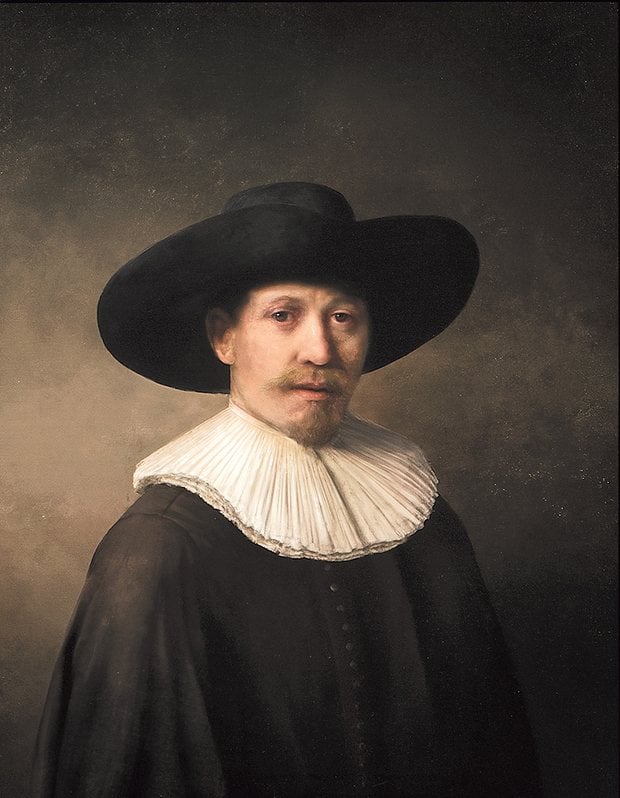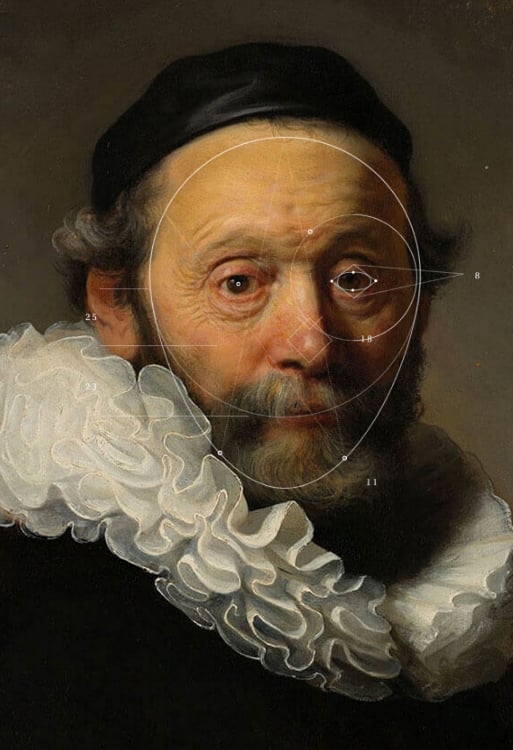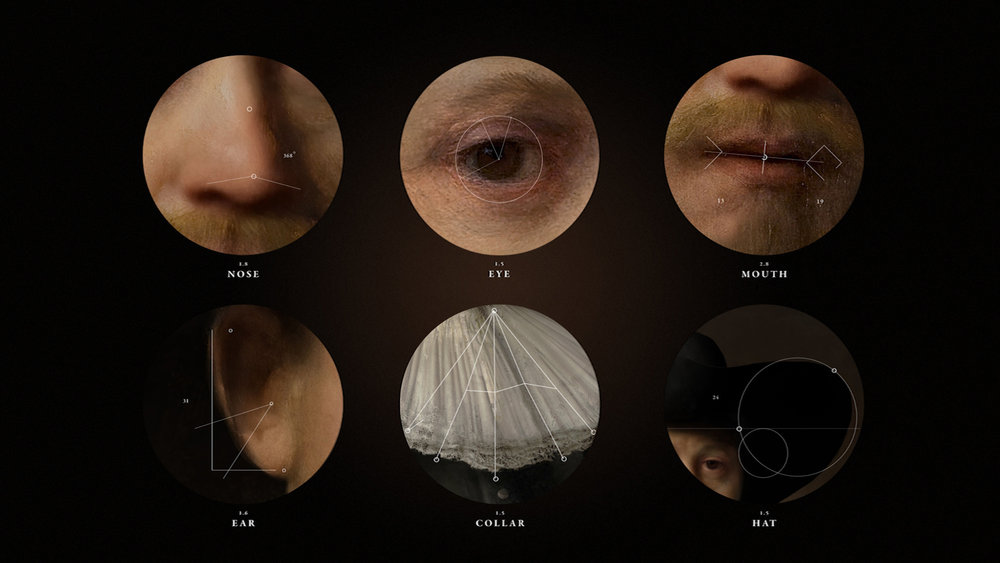Art World
New Rembrandt Artwork Created Via 168,263 ‘Painting Fragments’
A new Old Master comes to light.

A new Old Master comes to light.

Sarah Cascone

A portrait of a man dressed in black with a wide-brimmed hat and a frilled white collar, dubbed “The Next Rembrandt,” looks like something straight out the 17th century, but is instead the product of data analysis and artificial intelligence.
In October 2014, Dutch financial institution ING approached J. Walter Thompson Amsterdam advertising agency looking to come up with a project that would show innovation in Dutch art. Bas Korsten, J. Walter Thompson’s creative director, then came up with a simple, but potentially disturbing, creative prompt: “Can you teach a computer how to paint like Rembrandt?”
With this idea in mind, Korsten’s team, with assistance from Microsoft and advisers from Delft University of Technology (TU Delft), the Mauritshuis in the Hague, and Museum Het Rembrandthuis, designed a software system that could understand Rembrandt’s style and generate new features based on his use of geometry, composition, and painting materials. That software, with a complex algorithm and facial recognition technology, analyzed 346 paintings by the artist in order to best determine what another Rembrandt canvas might look like.

Geometric analysis of features in a Rembrandt painting.
Photo: the Next Rembrandt.
“There’s a lot of Rembrandt data available—you have this enormous amount of technical data from all these paintings from various collections,” said Joris Dik, a professor at TU Delft, in a statement.
Eighteen months later, on April 5, the team debuted a surprisingly emotional canvas in the style of the Dutch master. If a computer can rival one of the greatest Old Master painters, what does that say about the distinction between art and technology? (Google’s considerably trippier “Deep Dream” paintings, created by artificial intelligence, which invite similar questions, have already started to sell at auction.)
For Korsten, the day when computers can rival human creativity is still a long way off. “The computer does what we ask it, but if it does things that we didn’t ask, then I’m starting to worry,” he told artnet News in a phone call, pointing out that “The Next Rembrandt” merely mimics the style existing works rather than creating something truly new.

Geometric analysis of features in “The Next Rembrandt.”
Photo: the Next Rembrandt.
Because Rembrandt most commonly painted portraits (they make up 67 percent of his known oeuvre), the team determined that “The Next Rembrandt” fell in line. Demographically, the most common subject for the artist would be a white man, between the age of 30 and 40. Most likely, he would wear black and white, and face to the right.
With those parameters in mind, the algorithm generated new facial features based on the analytic results, and arranged them using Rembrandt’s preferred proportions. It took 500 hours of rendering to produce the finished painting, which contains 148 million pixels and mimics the artists renowned use of light and shadow.
TU Delft then generated a 3-D scan of the final image that incorporated a recreation of Rembrandt’s brush stroke style. A 3-D print of the image, printed in 13 layers to best replicate the texture of a real oil painting, is set to go on public display in the near future.
One prospective use of this technology could be reconstructing missing areas of existing paintings. Korsten told us that Microsoft and TU Delft are looking into potentially restoring a considerably-burned Rembrandt canvas using the new technology.